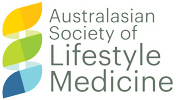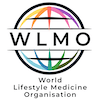
Simplifying the message
The complexity of lifestyle behaviour change and a possible solution
There are a number of lifestyle and environmental drivers of chronic disease (15 to be exact). However, as with germs that cause infections, there are some standouts: poor nutrition, inactivity and stress for example are the big three (with inadequate sleep rapidly rising as a fourth). A healthy diet, exercise and stress management could thus be seen as the antibiotics of lifestyle medicine. But if compliance to pharmaceutical prescription is poor, compliance to these forms of behaviour change, as is required for chronic disease management, is diabolical.
This partly because changing the habits of a lifetime is difficult, especially when these are not just encouraged but almost mandated by the consumer society. Another part of the problem though is surely the complexity and ambiguity with which we burden those requiring change.
Nowhere is this more obvious than in the field of nutrition. Popular magazine articles, like the recent Time story on dietary fat leave the public dazed and confused in the light of a lifetime of contrary information.
Exercise is more of a finished science, with less controversy. But even here there are disputed claims, such as for the role of exercise in weight loss.
Stress didn’t even exist in the minds of many Cardiologists until the major ‘Interheart’ study detailing it as one of the major causes of heart disease in 2002, which made it impossible to ignore.
The rise in the numbers of peer reviewed health journals and shift to open access in the flight for readership haven’t helped, with a drop in the standards of research able to be published, sensationalised and disseminated widely in the 24hr news cycle.
The clinician is often caught in the crossfire: What and how much should s/he prescribe in the limited time of a standard consultation?
With science becoming more and more complicated, one solution may be a shift back to simplification. Most people only recall information in bite size chunks. So what three things can we say about nutrition, exercise and stress that are scientifically sound, understandable and covers a range of chronic problems?
Taking nutrition: There’s little doubt that while a deprived section of all populations can suffer from under-nutrition, the bigger problem we face today is over-nutrition. The first prescription for the majority to begin to tackle this problem is simply to eat less. How we do this is probably less important than just doing it.
Secondly, if there’s a general category of foods that should be eaten less for better health, it’s generally those that are processed. The second prescription for nutrition therefore would be to reduce foods with a high level of human interference. As US nutrition writer Michael Pollan puts it: “Eat food, mainly plants. But not too much.”
Third, because around 20% of energy in the Australian diet comes from sugar-sweetened drinks (SWDs), the prescription would be to reduce or eliminate SWDs (including fruit juices) and sugar added to teas and coffees. Artificial sweeteners can be one way of doing this – although with some caution on the amount used.
With physical activity most people would benefit from moving more where “…any movement is better than none, and more is better than a little.” Also, try not to miss two consecutive days of planned activity, as this tends to break any habit of exercise being developed. And third, include some resistance exercise (lifting, carrying, holding etc.) at least a couple of time a week, whether through a formal program or use of calisthenics (using one’s own body weight). Along side calisthenics you can use expandable rubber bands, tinned foods, household goods or furniture as weights and resistance.
As a summary, the first national guideline for physical activity remains good advice: “ Think of movement as an opportunity not an inconvenience.”
Stress is a little more complicated. Getting patients to recognize their ‘red line’ is a start and trying to keep below this will help prevent any problems. Then the key is ‘escape’ (either real or in the mind) to restore ‘control’ – real or perceived.
Escaping the stressor physically, if possible, is usually the best option (“If you can’t stand the heat, get out of the kitchen”). The R & D method (see box below) is a structure for doing this. Then learning other escapes like exercise, progressive muscular relaxation, meditation etc. can help stop stress becoming ‘strain.’
Of course there’s no guarantee that lifestyle advice will be acted on. But combining simplicity with accepted counseling principles is more likely to have a greater impact than a prescription that’s unlikely to be understood.
Any opinions or views expressed in third party content on this website are the opinions of the content provider and do not necessarily reflect the opinions or views of Aspen Australia. No payment has been made to, or by, Aspen Australia in regards to this content.
Simplifying Lifestyle Prescription
Nutrition
- Eat less
- Reduce foods with the greatest human interference
- Eliminate sugar sweetened drinks
“Eat food. Mainly plants. Not too much.”
Exercise
- Move more
- Don’t miss two consecutive days of planned activity
- Include some resistance exercise
“Think of movement as an opportunity, not an inconvenience.”
Stress
- Recognise your ‘red line’
- Escape – physically or mentally
- Use the R&D method (see box)
“ If you can’t stand the heat, get out of the kitchen.”
The R&D Method for Changing a Stressor
Reduce it – Do it
Remove it – Delegate it
Replace it – Delay it
Rethink it – Discuss it
Reframe it – Drop it
References:
Egger G., Dixon J. Beyond obesity and lifestyle: A review of 21st Century chronic disease determinants. BioMed Res Int Volume 2014, Article ID 731685, http://dx.doi.org/10.1155/2014/731685
Park A., (9 Feb. 2015). Retrieved from http://time.com/3702058/dietary-guidelines-fat-wrong/
Pollan M., (23 Jan. 2010). Retrieved from http://michaelpollan.com/reviews/how-to-eat/



